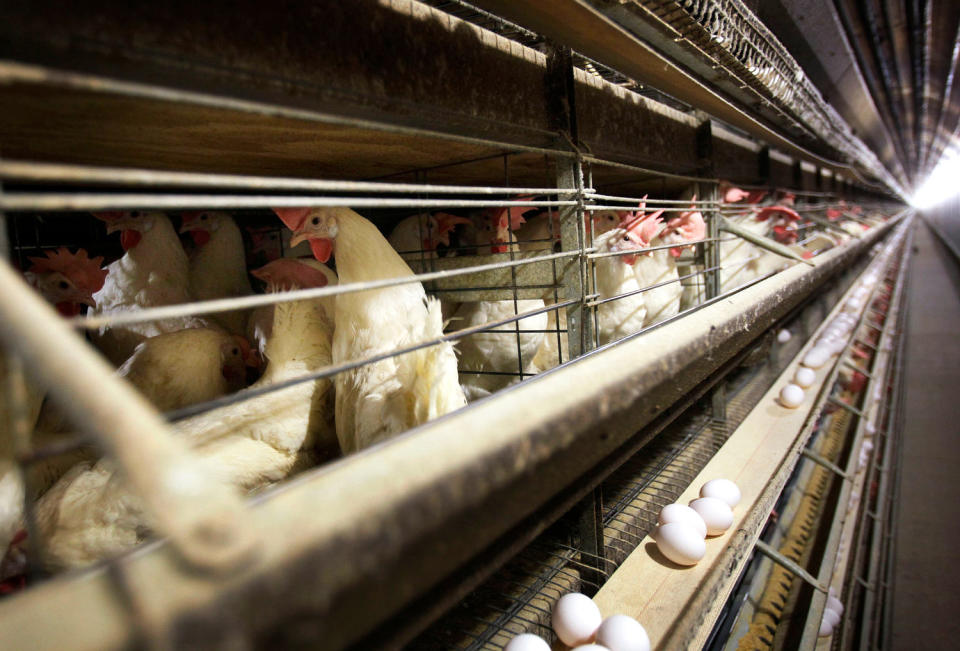Is there a new strain of bird flu to worry about?
On Wednesday, the World Health Organization reported the first confirmed human case of H5N2 type bird flu in Mexico, a 59-year-old man who died in April.
According to the WHO, the case adds to growing concern about the risk of bird flu spreading among humans, especially since the man had no history of exposure to poultry or other animals.
This strain is different from the outbreak of a bird flu virus called H5N1 that circulated among dairy cow herds in the United States and caused mild infection among three farm workers.
What is H5N2?
H5N2 is just one of several bird flu viruses. Does it really pose a significant health risk to humans?
D., an assistant professor of veterinary medicine and biomedical sciences at Penn State. Troy Sutton said exposure to the H5 virus in Mexico was not surprising. H5 viruses have been circulating among poultry and wild birds in Mexico since the mid-1990s. However, unlike other types of bird flu, such as H1 and H3 viruses, which cause epidemics in humans, H5 viruses rarely infect humans.

Viruses are classified by two types of proteins on their surface: hemagglutinin, or H, which plays an important role in allowing the virus to infect cells, and neuraminidase, or N, which helps the virus spread. Many different combinations of H and N proteins are possible.
H5N2 belongs to a family of avian influenza viruses called H5 that primarily infect wild birds. There are a total of nine known subtypes of the H5 virus, according to the Centers for Disease Control and Prevention.
H5N1, detected in dairy cows in the USA in March, also belongs to this family. This is often associated with highly contagious H5 virus strains called the “Goose Guangdong lineage,” which has caused numerous outbreaks in poultry and sporadic infections in humans over the past 20 years, Sutton said.
H5N1 has infected humans in 23 countries since 1997, resulting in severe pneumonia and death in about 50% of cases, according to the CDC.
“They come from a separate lineage with a separate history and a separate story about the disease they cause,” Sutton said of the H5N2 and H5N1 viruses.
Should people be worried?
The patient in Mexico had been bedridden for several weeks before symptoms appeared.
According to the World Health Organization, on April 17, the man developed fever, nausea, diarrhea, shortness of breath and general weakness. A week later, on April 24, he was hospitalized and died that day.
Sutton said it’s important to note that the man had multiple underlying medications, which likely aggravated his infection.
“The person may already be quite sick,” Sutton said. “That changes the calculus a little bit more than if, say, a healthy farm worker gets infected.”
WHO said no other cases were reported during the investigation. One of the 17 contacts identified and monitored at the hospital where the patient died reported a runny nose.
But experts still don’t know how the man contracted the virus, as he was not infected by poultry or other animals. If he was infected by another person, this suggests that there may be other unidentified cases.
“The possibility of a new virus subtype infecting a human is concerning,” Sutton said.
Dr. Michael ÖsterholmAn infectious diseases expert at the University of Minnesota said human-to-human transmission is unlikely. “They probably bought it from the same place.”
The data shows that the H5N2 virus that infects men is a low-pathogenic virus, which means it is unlikely to cause serious disease, Osterholm said.
“There is the high road and the low road, and the high road has certain genetic changes. “This makes it much more likely to cause serious disease,” Osterholm said. “And the easily transmitted low pathway can often infect any number of animal species with little or no symptoms.”
What scientists want to know
Dr. Infectious diseases specialist and director of the Vaccine Education Center at Children’s Hospital of Philadelphia. Paul Offit said the real question among experts is whether H5N2 has mutated in ways that make it easier for it to spread to humans.
He said H5 viruses generally have difficulty infecting humans because the cell receptors they target in birds are very different from ours.
That’s why people often become infected with H5 viruses through direct contact with birds and poultry, rather than other people, he said.
H5N1, which evolved to rarely cause infections in humans, has never caused widespread human-to-human transmission, he added.
“I don’t think the fact that it’s H5N2 compared to H5N1 is meaningful in terms of representing something that is more likely to be associated with a pandemic,” Offit said. “If the virus cannot multiply well in the upper respiratory tract, it cannot spread easily from person to person,” he said.
Sutton said scientists still need to do more genetic sequencing before determining whether the H5N2 virus that infected the Mexican man is a risk to humans.
“Until we have that information, it’s really hard to draw many conclusions.”
H5N1 is what we really need to be “laser focused” on, Osterholm said.
According to the U.S. Department of Agriculture, the H5N1 virus emerged in dairy cows in the United States and infected at least 84 herds in nine states; This makes it more likely that the virus will acquire mutations that allow it to spread to humans.
This article first appeared on NBCNews.com.